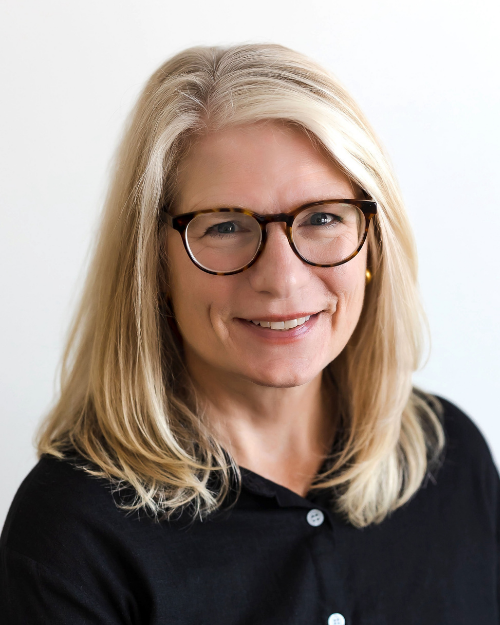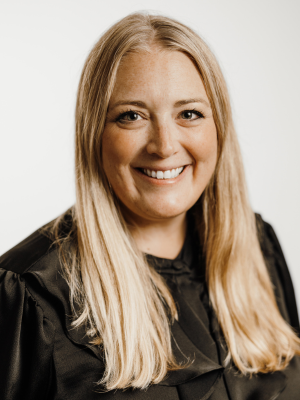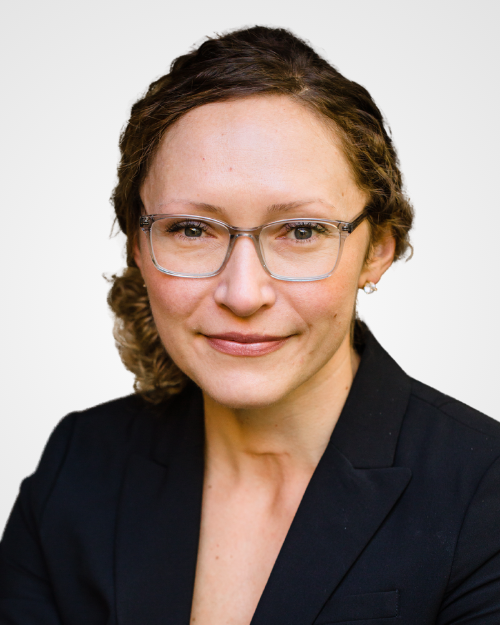A Wake-Up Call Over Breakfast
Kendra* is the development director of a regional food bank. Recently, she met a board member, Luisa, for breakfast. They were chatting the way they always did at their breakfast meetings when Luisa set down her coffee cup with a sigh. “There’s something I need to show you,” she said, pulling a stack of three letters out of her handbag. “I got three appeals from the food bank this quarter,” she said gently. “Two went to my home and one to my office, and this one,” she said, presenting the envelope to Kendra, “still has me listed as Mrs. Walker.” The name of Luisa’s former husband made them both wince.
Concerned, Kendra took a more careful look at the stack. The letters were beautifully written and personalized, but two-thirds of the data that went into them was flat-out wrong. Luisa was a committed supporter, and Kendra knew she would be in for the long haul, but as the situation sank in, Kendra’s stomach dropped. Duplicate records, outdated names, and wrong addresses weren’t just clerical errors—they were signs of a much larger problem: wildly inaccurate data. Kendra apologized profusely, and Luisa was so gracious, but Kendra knew that there were more errors out there that wouldn’t be so kindly received.
Back at the office, Kendra went straight to see Youssef, the food bank’s new development data coordinator. He’d been hired two weeks earlier, and his workspace was only halfway unpacked. “I just had the most mortifying conversation with Luisa Reyes,” she told him. She explained the whole situation, concluding with, “Our data is a mess.”
Youssef nodded, unsurprised. “To be honest, I knew this would be the first issue we needed to solve. Not to worry. I’ve started an audit,” he said. “There’s a lot to untangle: out-of-date records, partial merges, inconsistent fields; but it’s fixable. We just need to review and clean up about 30,000 records. Kendra’s jaw dropped, “That’s a ton of work! How will we do that before the November direct mail appeal?” Youssef smiled, “It’s okay! I’ll triage the cleanup, starting with our most important stakeholders and working our way through the list from there. This will not be just a one-time sweep; what I’m implementing is a plan for ongoing data health.”
Data Health, and Why It Matters
“Data health” (sometimes called “data hygiene”) refers to the condition of an organization’s data—its accuracy, consistency, and usability. Bad data erodes donor trust and directly undermines the sophisticated tools nonprofits rely on for the science of fundraising. When names, addresses, or giving histories are inaccurate, data screening and predictive modeling cannot function properly. Reliable screening depends on clean, standardized fields to match records against wealth indicators, philanthropic databases, and demographic trends. When the data is in disarray, an organization will struggle to identify important prospects, analyze giving potential, or build a base of evidence to drive strategy. Clean data, on the other hand, strengthens every part of fundraising: screening, segmentation, communications, stewardship, and strategic planning.
Creative Fundraising Advisors’ (CFA) Data & Research team—Dan Alberti, Senior Manager, Data Solutions, and Stephanie Willis, Senior Manager, Prospect Development—regularly helps nonprofits identify and correct systemic data issues.
“Think of data health like tending a garden,” says Dan. “You can’t expect to have healthy plants or an abundant harvest if you don’t routinely fertilize, water, and weed. Consistent inputs—accurate entries, standardized fields, and regular cleanups—build a database that supports the whole organization’s vitality. Conversely, if you’re not routinely checking and cleaning the data, small issues can quietly grow into big credibility problems.”
As both Kendra and Youssef had predicted, the problem with incorrect data at the food bank wasn’t isolated. When Youssef really dug into his audit, he discovered inconsistencies in salutations, conflicting household records, and out-of-date contact preferences. In many cases, the team was sending multiple different versions of an appeal to the same donors, sometimes at multiple addresses. Beyond embarrassment, that duplication was wasting resources—printing, postage, and valuable staff time.
Diagnosis and First Steps
The first phase of Youssef’s cleanup plan was discovery. He exported all donor records into a master spreadsheet so he could see the whole landscape at once—filtering for duplicates, blank fields, and irregular entries before making changes inside the CRM. He also mapped the source of each list: online donations, mailed checks, event attendees, and volunteer sign-ups. “We needed to know where the errors were entering the system,” he explained.
The “flat view” (or spreadsheet) revealed distinct patterns. Once he isolated the problem areas, Youssef began a systematic cleanse: deduplication, standardization of names and addresses, verification of email formats, and cross-referencing gift histories. Then he scheduled recurring maintenance tasks: a monthly duplicate check, a quarterly data-entry review, and an annual full-file audit.
Pro Tips for Data Health
1. Establish clear data entry rules.
Youssef created a written “data manual,” defining every field and abbreviation. Then, he drafted clear instructions on how to record household names, salutations, gift types, and notes. This living document became a training tool for anyone touching the database. “The more consistent your inputs,” says Dan, “the cleaner your outputs. Data rules aren’t red tape; they’re the language everyone needs to speak to keep information coherent.”
2. Schedule regular reviews.
The food bank built a monthly data health routine: running duplicate reports, checking for blanks in key fields, and using national address-verification tools. “Good data hygiene is never finished,” Stephanie emphasizes. “Every new record potentially contains multiple opportunities for error. Healthy databases have ongoing cleaning habits baked into the workflow.”
3. Align systems and people.
Stephanie also points out that data health isn’t just a technical task—it’s cultural. “The most successful organizations are those that build shared responsibility for data accuracy across departments,” she says. “If your program staff, gift processors, and fundraisers all understand how their entries affect the whole system, you’ll have fewer errors and better decisions. Clean data is everyone’s job.”
When Good Data Builds Donor Trust
As the cleanup progressed, Youssef and Kendra began to see immediate benefits. With duplicates resolved, mailings became more cost-efficient. Merge fields populated correctly, and acknowledgment letters used the right names and salutations. Kendra thought she noticed something else: the donor tone was improving. “When people get communications that clearly recognize them, they feel known,” she said. “Even a small fix—like addressing someone by their chosen name—signals respect and professionalism.”
To measure progress, Youssef created a simple dashboard showing three metrics: duplicate rate, percentage of complete records (including valid email and address), and average turnaround time for gift acknowledgment. Within three months, duplicates dropped by 40%, and the team could process gifts and send thank-yous two days faster.
From Data Health to Data Confidence
By spring, the food bank’s next direct mail appeal ran flawlessly. Every letter was correctly addressed, and no donor received more than one. When Luisa, the board member who first pointed out the problem, received her spring appeal, she called Kendra—not to complain, but to congratulate. “This one’s perfect,” she said. “Nice job cleaning house, and please give Youssef my thanks.”
“Clean data is a form of stewardship,” notes Stephanie. “It shows donors that you value accuracy, respect their information and preferences, and run an organization that is responsible and trustworthy. When you’re committed to donor-centered, relationship-based fundraising, you can’t allow sloppy data to undermine the trust you’ve worked so hard to build. ”
The Strategic Advantage of Clean Data
Healthy data doesn’t just prevent errors—it empowers better strategy. With reliable records, Kendra could segment appeals by giving behavior and communication preferences, identify lapsed donors with confidence, and generate reliable retention reports. When she presented to the board at fiscal year’s end, her charts were more credible than ever before.
“Data health might not sound glamorous,” Dan says, “but it’s the foundation of everything else—storytelling, stewardship, analytics, and campaign success. Without it, you’re flying blind.”
The positive ripple effect extended beyond development; the food bank program staff could now connect donor support with impact and service metrics more reliably. Finance could reconcile reports faster. Communications could personalize messages accurately across channels. Kendra and Youssef had transformed what started as a breakfast embarrassment into an organizational triumph. “I used to dread pulling lists,” Kendra admitted. “Now I actually trust what’s in our system. Clean data gives you confidence—it’s like seeing clearly after years of fog.”
Partner with Us
Is your nonprofit’s data helping or hindering your mission? Do duplicate records, missing information, or inconsistent reports make fundraising harder than it should be? Take CFA’s data self-assessment to see if your data systems need attention. CFA helps organizations audit, organize, and sustain healthy databases that strengthen trust and drive fundraising strategy. Our experts can audit your current system, design routines for long-term maintenance, and train your staff to keep information accurate across every department. Contact CFA today to learn how strong data health can support your organization’s growth and impact.
*Disclaimer: Client confidentiality is paramount in our work with each and every organization. The story in this article is fiction, based on real situations drawn from CFA’s broad experience serving nonprofit organizations.
Leslie Cronin, Senior Manager of Strategic Communications
Leslie Cronin comes to Creative Fundraising Advisors with broad experience in education and nonprofits. Early in her career, she taught English, composition, and creative writing at selective independent schools, colleges, and universities. In 2005, she became Senior Development Writer at the Museum of Fine Arts, Houston, overseeing all aspects of communication coming out of the museum’s development department including exhibition descriptions, grant applications, correspondence with major donors, acknowledgements, and event invitations.
Leslie later brought her experience in education and fundraising to a new role, serving first as board member and then vice president of the board of an independent school in Houston, Texas. During her tenure, she was instrumental in the formulation of the school’s 20-year plan, including its successful accreditation as an International Baccalaureate institution. She worked closely with a wide variety of consultants on urban planning, architecture, and a fundraising feasibility study. Her insight into the client experience helps her every day in her work for CFA.
As Senior Manager of Strategic Communications, Leslie helps CFA’s clients shape their campaigns for maximum impact and results by leading case development workshops, writing compelling case summaries, and crafting powerfully persuasive campaign collateral. Additionally, Leslie manages CFA’s brand voice by developing content for the firm’s resource library and overseeing the editorial calendar.
Leslie believes nonprofits have the power to change the world. In crafting cases for support, she writes as a committed advocate for each client and their goals. Leslie holds two Masters degrees, one an MFA from the Iowa Writers’ Workshop, the other an MA in English Literature from Temple University. She is mother to two grown children, a voracious reader, and an amateur equestrian. She lives on Cape Cod with her husband, author Justin Cronin, and their rescue dog, Lonesome Dove.







